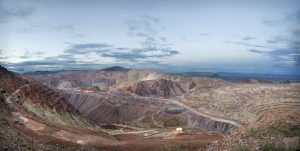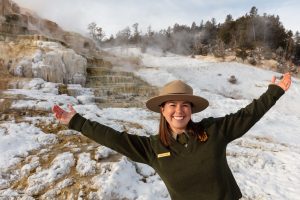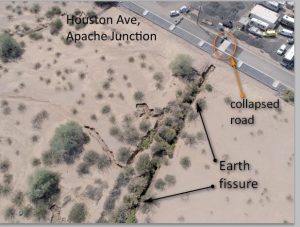1.4 What do geologists do?
“So, you study rocks…”
This is probably the most common response when a person meets a geologist. Yes, geologists study rocks, but also much more. They study the materials, processes, physical nature, and history of Earth. But, what does this look like? In Arizona, there are many geologists employed doing many different jobs.
Energy and Resources

Geologists may work for mining and exploration companies finding important ore bodies and planning methods of extraction. In Arizona, one of the “5 C’s” that served an important role in the economy is copper. Renewable energies, such as solar, geothermal, hydroelectric, and wind, also employ geologists.
Potential Jobs:
- Petroleum Geologist
- Mining Geologist
- Exploration Geologist
- Environmental Geologist
Infrastructure, Society, and the Environment
They have careers in city planning and engineering, as all roadways, buildings, and communities are situated on dynamic and every-changing Earth materials.

Potential Jobs:
- Geological Engineer
- Environmental Analyst
- Sedimentologist
- Geotechnician
- Sustainability Engineer
- GIS Analyst
- Consulting Geologist
- Park Ranger
- Educator
Hazards and Surface Processes

They study geologic hazards like floods, earthquakes, landslides, and volcanic eruptions, in order to understand how to prepare for and mitigate disasters. Another area involves the study of water throughout the geosphere, hydrosphere, atmosphere, cryosphere, and biosphere. All of this information is used to educate, plan and develop communities, and protect our natural resources.
Potential Jobs:
- Research Geologist
- Hydrogeologist
- Volcanologist
- Seismologist
- Forester
Outlook and Future Needs
While some geologic jobs are cyclical in nature, changing due to economic and societal needs, there is a constant need for geoscientists. The United States Bureau of Labor and Statistics lists job outlook in the next ten years at 7%, about as fast as the average for all occupations. However, the median wages for careers in the geosciences were nearly double than the national average for all workers.
***See 1.5 for Text and Media Attributions

